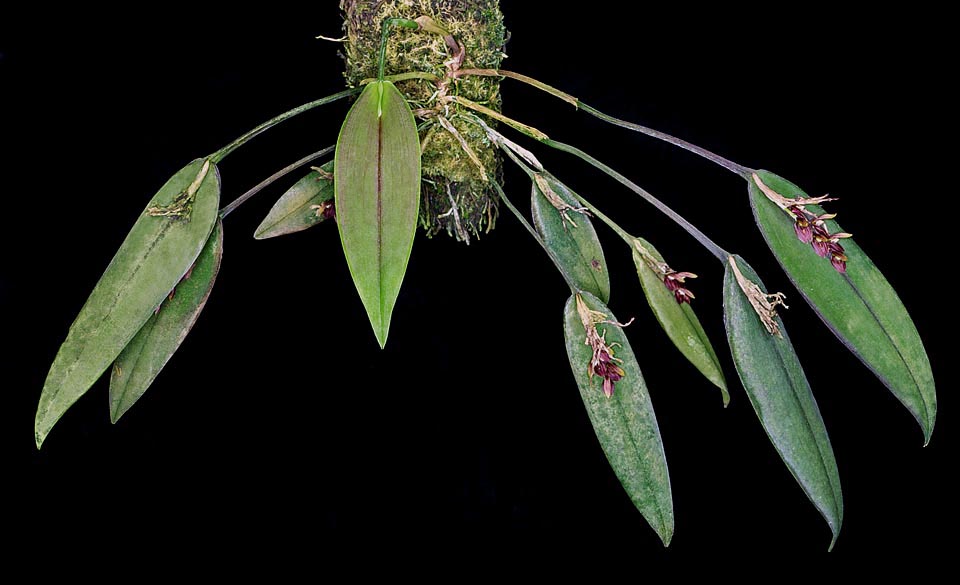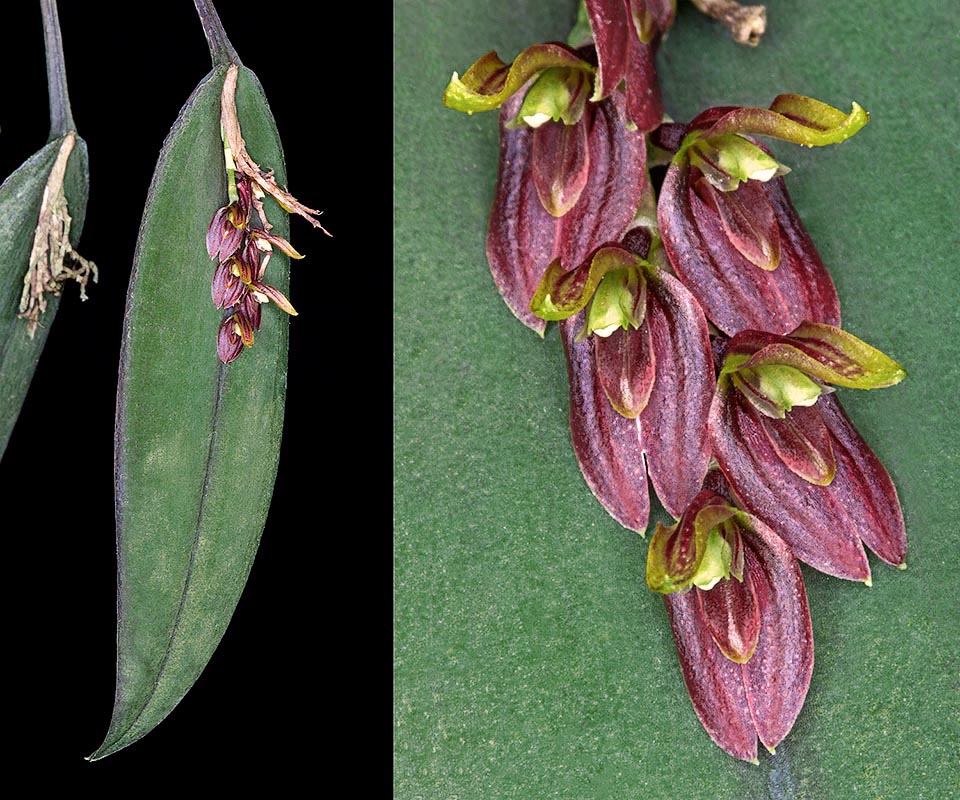Family : Orchidaceae

Text © Pietro Puccio

English translation by Mario Beltramini
The species is native to Bolivia, Colombia, Costa Rica, Ecuador and Panama where it grows as epiphyte on the trees of the humid forests up to about 1600 m of altitude.
The name of the genus is the combination of the Greek substantives “ἀκίς” (akis) = tip and “ανθηρά” (anthera) = anther; the specific name refers to the place where the species type has been found, Loja, in Ecuador.
The Acianthera lojae (Schltr.) Luer (2004) is an epiphytic species, 10-18 cm tall, with creeping rhizome, filiform roots and thin stems, with trigonal section, 5-8 cm long, provided at the apex of one single oblong sessile leaf with acute apex, 5-8 cm long and 0,8-2 cm broad, coriaceous, of dark green colour.

Acianthera lojae is a small epiphyte with creeping rhizome. Filiform roots and thin stems, 5-8 cm long, with at the apex only one sessile 5-8 cm leaf © Giuseppe Mazza
Terminal inflorescence, initially enclosed in a 1,2 cm long spathe, racemose, 2,5 cm long, with 5-7 tiny flowers of reddish brown colour. Oblong-ovate dorsal sepal with obtuse apex, 7-8 mm long and 2 mm broad, lateral sepals united at the base for more than 2/3 of the length, oblong with acute apex, about 7 mm long and about 2 mm broad singly, oblong-obovate petals, about 2 mm long and 1 mm broad, ovate-elliptic labellum, fleshy, warty, 3 mm long and 1,5 mm broad, and 2 mm long column.
It reproduces by seed, in vitro, and by division, with each section provided of at least 3-4 stems.
Species present in cultivation almost exclusively in specialized botanical collections, requires a shady position, averagely high temperatures in summer, 18-28 °C, cooler in winter, with lowest not under the 12 °C, high humidity 70-80% and air constantly in slight movement.

Native to Bolivia, Colombia, Costa Rica, Ecuador and Panama is very rare in cultivation. Terminal inflorescences with 5-7 tiny flowers with reddish brown shades © Giuseppe Mazza
During the growth period the waterings must be regular and abundant, utilizing rain water, by reverse osmosis or demineralized, spaced when the growth of the leaves is completed, but without ever allowing it to dry up completely. It is usually mounted on trunks, bark, rafts of cork or of roots of arborescent ferns with sphagnum at the base to maintain the humidity. Repottings and divisions are to be done after the blooming.
The species is reported in the appendix II of the CITES (species whose trade is ruled internationally).
Synonyms: Pleurothallis lojae Schltr. (1921); Pleurothallis brunnescens Schltr. (1923); Pleurothallis citrophila Luer (1977); Pleurothallis florosa Luer (1977); Acianthera citrophila (Luer) Pridgeon & M.W.Chase (2001); Acianthera florosa (Luer) Pridgeon & M.W.Chase (2001).
